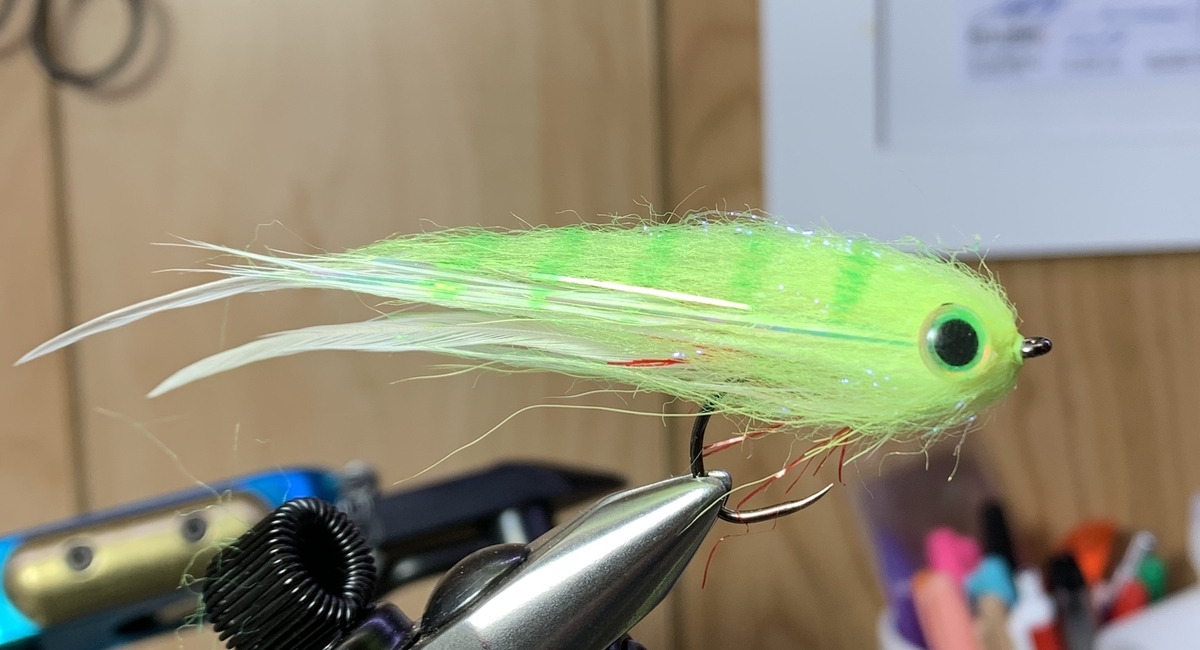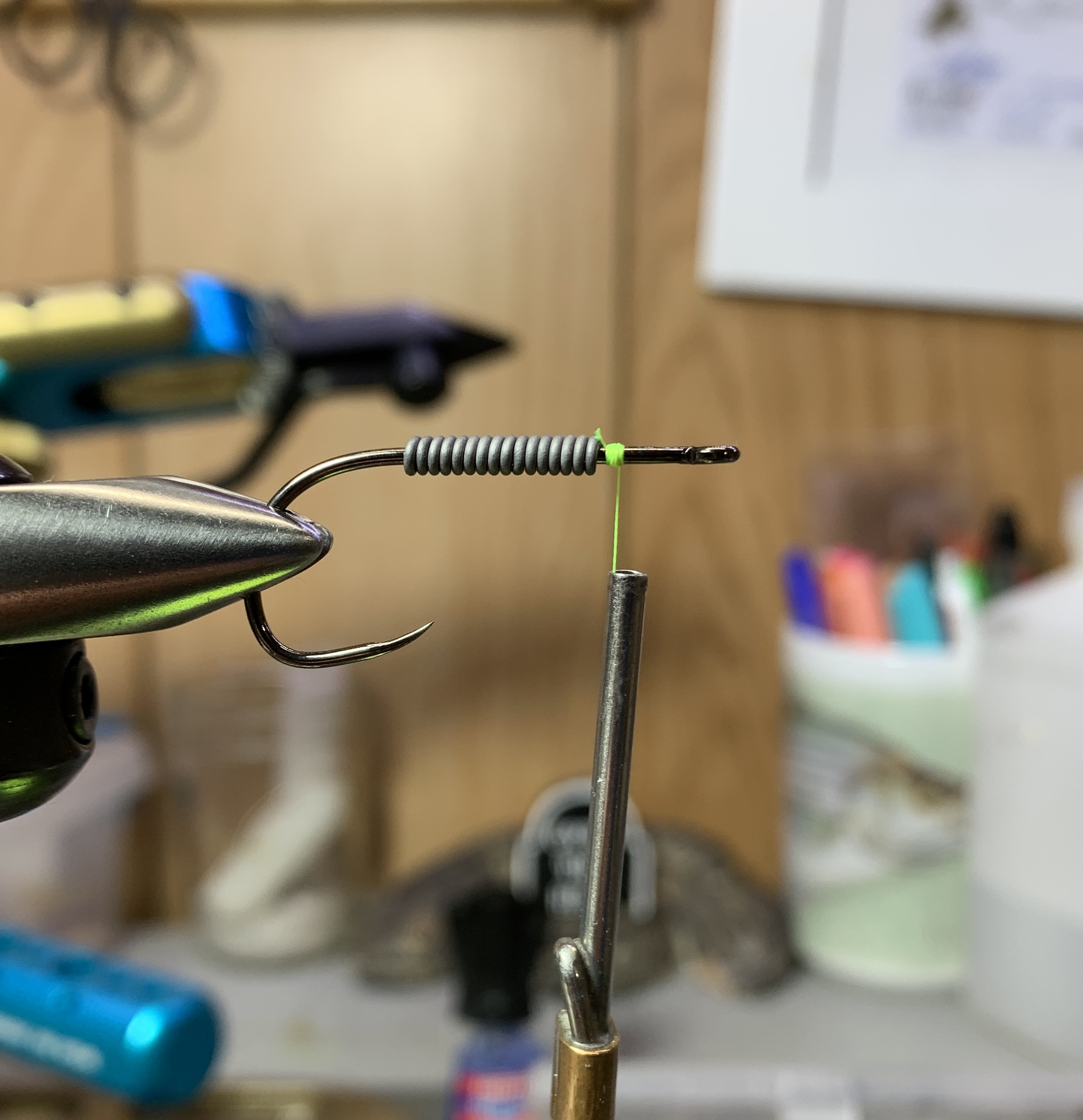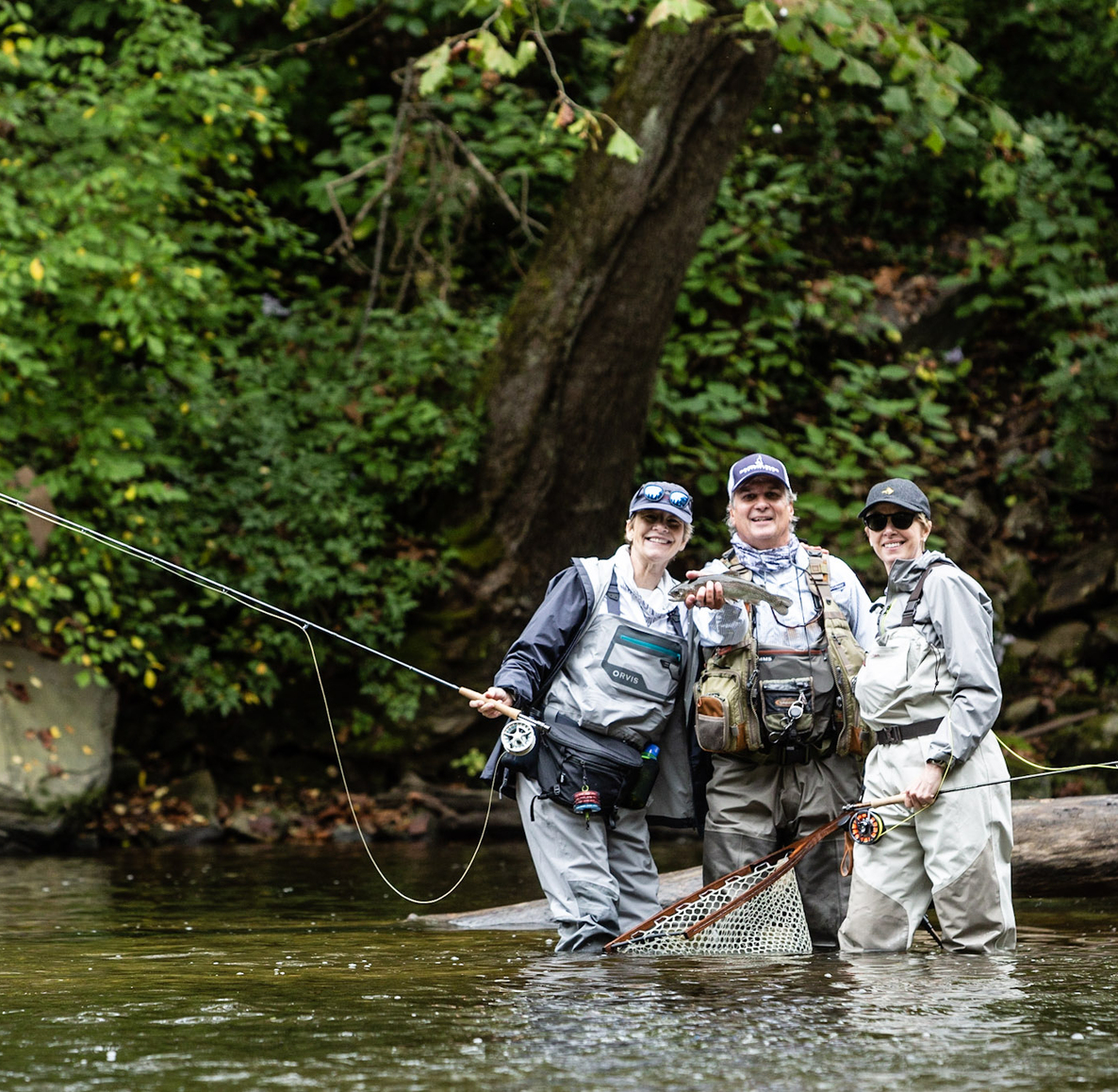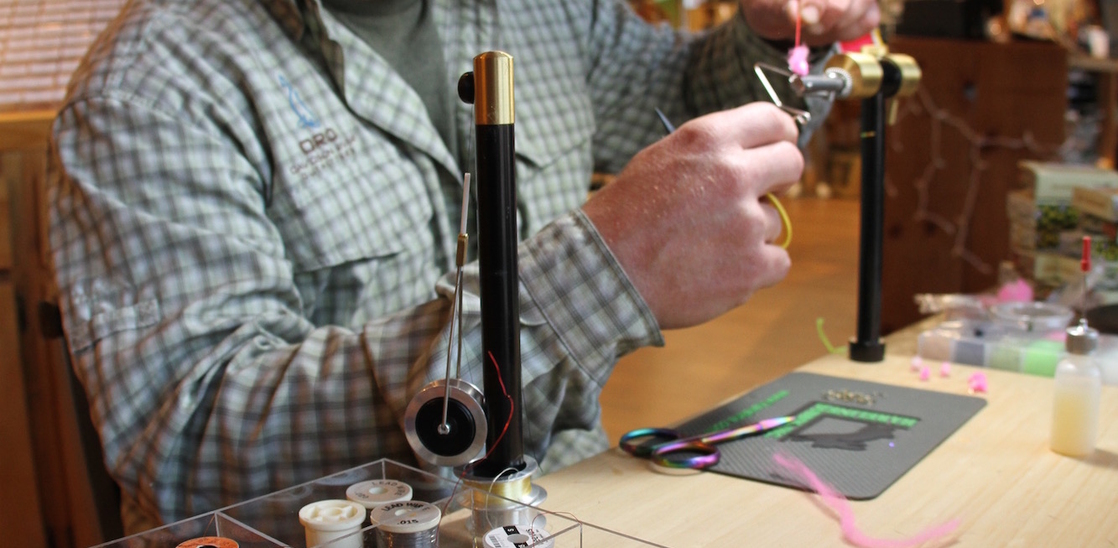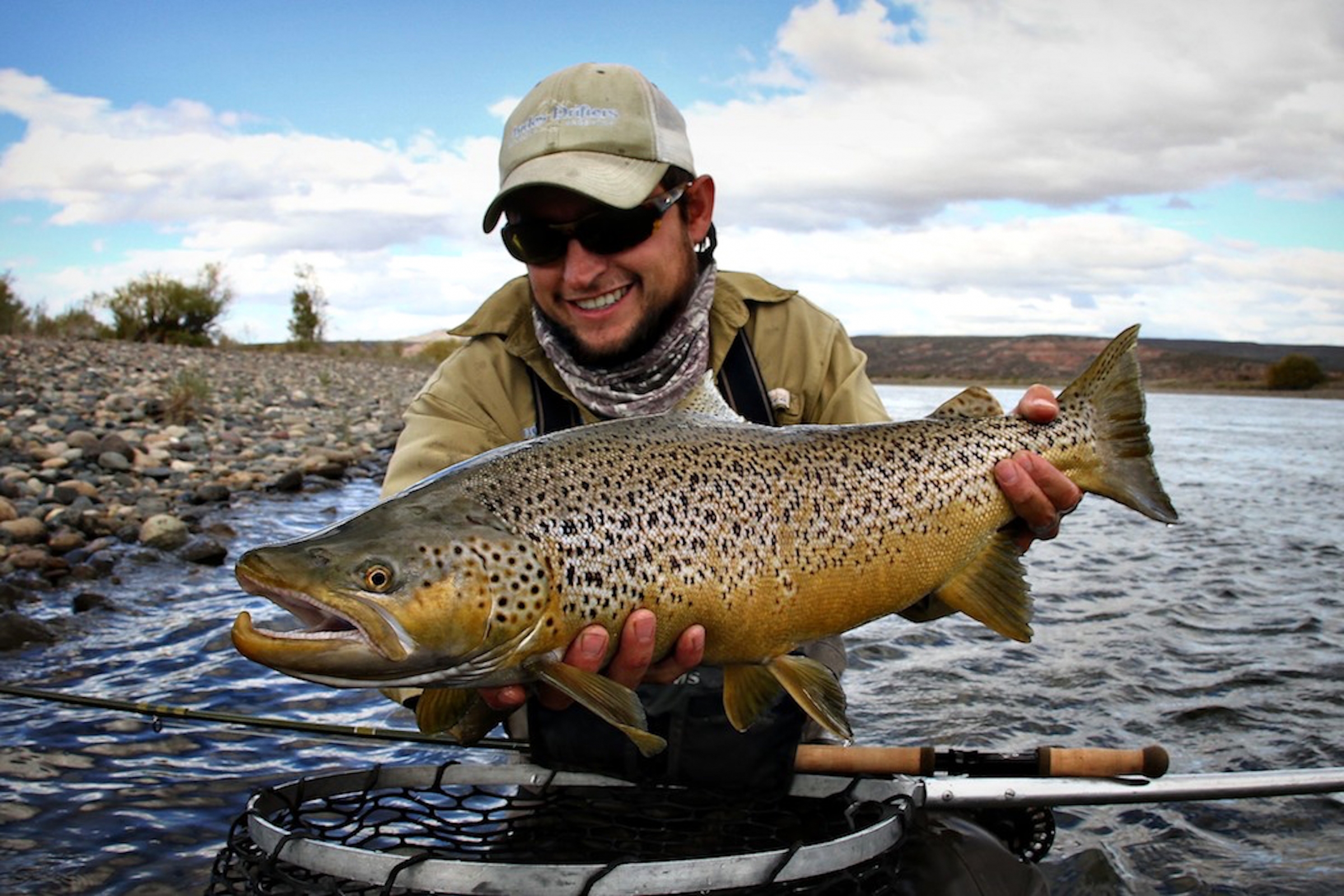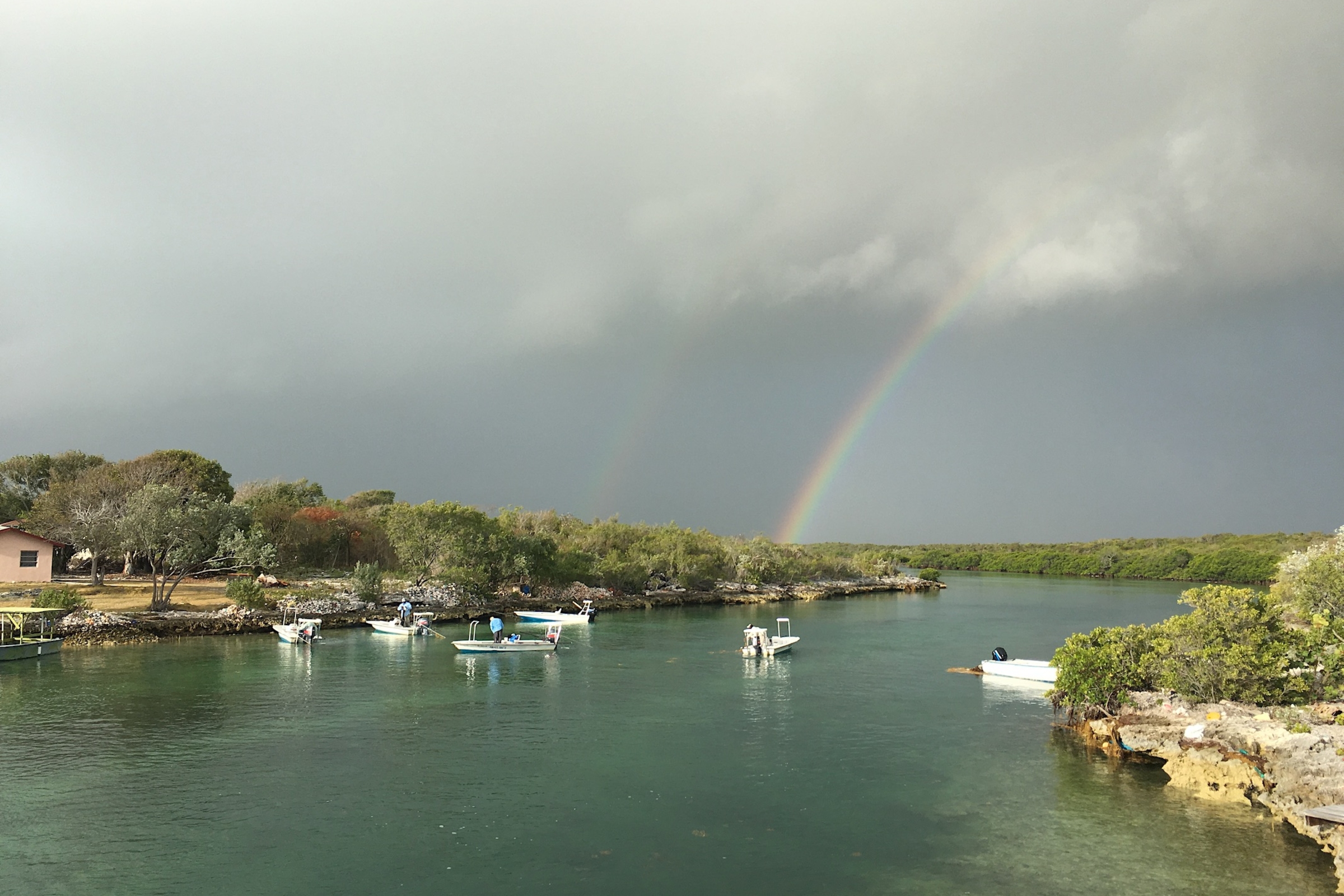Hollow Fly
Spring is here, and now is the time to start working on those warm water fly boxes for the months ahead. Hollow Fly patterns come from the mind of saltwater fly tying legend, Bob Popovics, but can be tied in a variety of sizes, and color ways, to be effective for most predatory fish. The fly below is a perfect size for fishing for Smallmouth, Largemouth, White Bass, and Hybrid Bass. And.....for those who don't know, Chartreuse/White might be the best warm water color combo out there. Prove me wrong. Hollow Flies are best fished when tied on with a no slip mono loop knot, and are excellent when combined with slow sink to intermediate sinking fly lines.
Ingredients
Hook: Firehole 811 #4
Weight: 0.030 Lead Free Wire
Thread: Veevus 6/0- Fl. Chartreuse
Tail: Saddle Hackle Feathers- White
Underbody: Mini Flat Fly Braid- Chartreuse
Support Structure: Bucktail- Chartreuse
Under Collar: UV Polar Chenille- Red
Main Body: Fish Hunter Marabou- Fl. White
Flash: Flashabou- Chartreuse
Head: Senyo's Laser Dub- Chartreuse
Eyes: Holographic Dome
Step 1: Wrap the lead free wire onto the hook shank. The amount is up to the tyer, but keeping the wraps tight is important. Then tie onto the hook just in front of the unleaded wire. This will be a good marker to ensure there is plenty of room in the end.
Step 2: Cover the unleaded wire with thread. This will make the fly more durable while both tying and fishing.
Step 3: Tie in the saddle hackles for the tail on each side of the hook. Length is up to the tyer, but generally 1.5 times the length of the hook shank works best.
Step 4: Tie in the flat braid, and wrap over the weighted wire. This isn't necessary, but makes the fly look nicer.
Step 5: Tie in the bucktail with the tips facing forward. Then wrap the polar chenille over the butts to create a small "ball" of material.
Step 6: Using a cap from a ballpoint pen, force the bucktail fibers to point toward the back of the fly. Besure to make sure the fibers are somewhat equal on all sides of the hook.
Step 7: Make several wraps on the front side of the bucktail to make sure that the fibers stay pointed toward the back.
Step 8: Tie in the marabou feather by the tip, with the cup of the feather facing forward. Wrap the feather in one spot 3-4 turns. Be sure to "invite" the feather fibers toward the back of the fly with your fingers between each wrap.

Step 9: Tie in a few strands of flashabou on either side of the fly. Be sure to trim these shorter that the longest marabou fibers to help maintain the fly's taper.
Step 10: For the head of the fly using the Laser Dub. Be sure to lash the material onto the fly, and DO NOT TWIST DUB. Once the amount of desired dubbing has been applied, comb the fly with a dubbing brush.
Step 11(optional): Attach some eyes using Zap Goo Cement for best durability. Then, use a permanent marker to add some faint bars to the top of the fly.


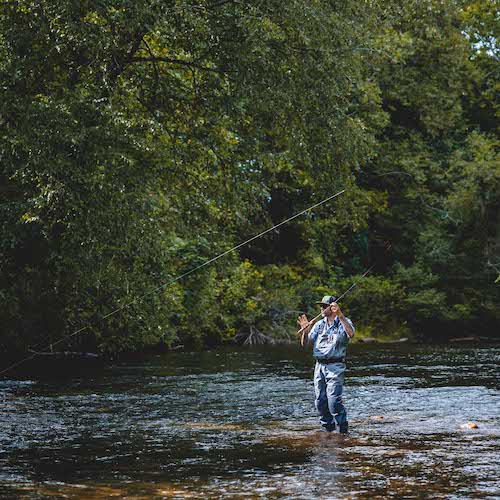 Stream Report
Stream Report Seasonal Hatches
Seasonal Hatches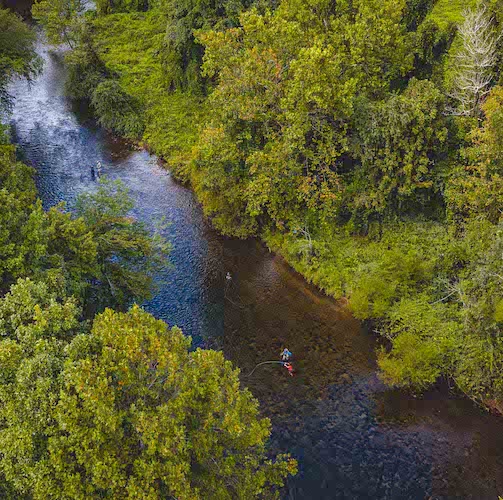 Stream Guide
Stream Guide